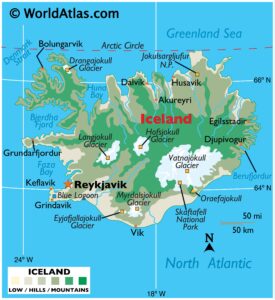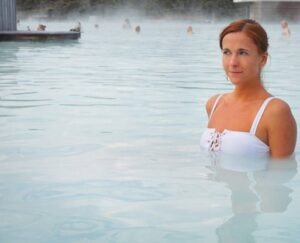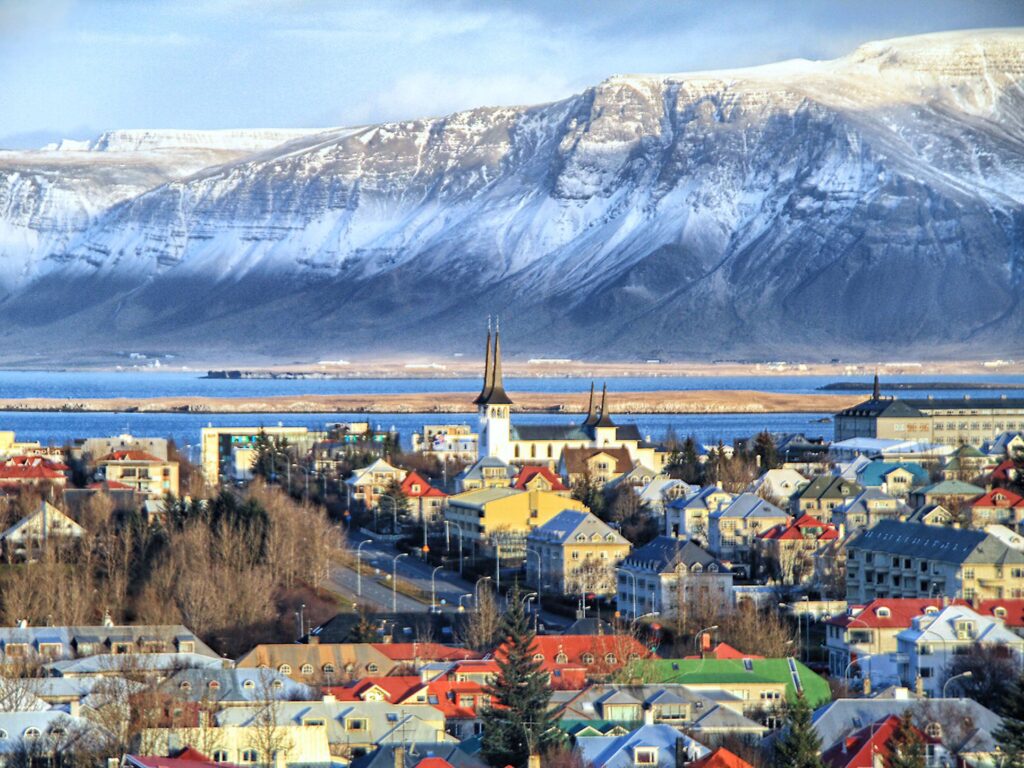» posted on Wednesday, August 31st, 2022 by Linda Lou Burton
About Iceland
Linda Lou Burton posting from Little Rock, Arkansas – I know you’re wondering – why on earth would anyone go almost to the Arctic Circle after journeying to the Equator? There’s a good story behind it, which I’ll save for later. But top reason to go to Iceland is much the same reason for going to Africa: I’ve wanted to for a very, very long time. And since you have to go through Europe to get back to the US from Africa, what’s a few hours more flying time to hop a bit further north? Here are some things you need to know.
 How big is Iceland? Where is it? What does it look like?
How big is Iceland? Where is it? What does it look like?
Iceland is about the size of the US state of Virginia. Technically a part of Europe, it is perched in the North Atlantic between Norway and Greenland, just brushing the Arctic Circle. It is the biggest part of the Mid-Atlantic Ridge that rises above sea level, and its central volcanic plateau erupts frequently. The interior consists of a plateau of sand and lava fields, mountains, and glaciers. Many rivers flow to the sea through the lowlands. Altogether a striking landscape of breathtaking waterfalls, bubbling geothermals, and rugged coastline.
How about Iceland’s weather?
 With a name that speaks of ICE, and a location not that far from the North Pole, Iceland has a surprisingly temperate climate. The Gulf Stream gets credit for that, plus the fact that Iceland sits atop a massive magma hot spot called the Iceland Plume. Outdoor swimming goes on year-round thanks to geothermal pools; houses are heated that way as well. Still, expect frequent weather changes in a day’s time; layer up. Last-day-of-August highs and lows: Little Rock 90-73; Reykjavik 53-44.
With a name that speaks of ICE, and a location not that far from the North Pole, Iceland has a surprisingly temperate climate. The Gulf Stream gets credit for that, plus the fact that Iceland sits atop a massive magma hot spot called the Iceland Plume. Outdoor swimming goes on year-round thanks to geothermal pools; houses are heated that way as well. Still, expect frequent weather changes in a day’s time; layer up. Last-day-of-August highs and lows: Little Rock 90-73; Reykjavik 53-44.
Who lives in Iceland?
Iceland’s people population last year was estimated at 376,248; 89% of that is of Icelandic heritage. Most Icelanders are descendants of Norse and Gaelic settlers. Icelandic, a North Germanic language, is descended from Old West Norse. Rather than using family names, as is the custom in most Western nations, Icelanders carry patronymic or matronymic surnames, and refer to one another by their given name. Patronymic last names are based on the first name of the father; matronymic names on the first name of the mother. These follow the person’s given name, e.g. Elísabet Jónsdóttir (“Elísabet, Jón’s daughter, ” Jón, being the father), or Ólafur Katrínarson (“Ólafur, Katrín’s son,” Katrín being the mother). 
As to the animal population, before humans settled in the 9th century, Iceland had only one land mammal, the Arctic fox. The rest of the creatures were either birds or marine animals. A millennium later, a wealth of life has adapted to the harsh climate, one of the most unique being the sturdy Icelandic horse, its bloodline so protected no imported horses are allowed. Sheep roam freely, reindeer too, but it’s the marine life that tops the list – whales, seals, dolphins, and 340 species of fish.
How does Iceland promote itself on its Visit Iceland site?
The coolest thing to see in Iceland today is a hot volcano. The Fagradalsfjall Volcano system awoke again on August 3, 2022, and is calm enough to sit close by and watch it spew and glow. Or you can go whale watching, berry picking, ice-cave exploring or simply sit on a tour bus and be driven from point to glorious point. Downtown Reykjavik is a walker’s paradise, plazas and parks and hop-on/hop-off buses. There are 266 museums in Iceland, 130 volcanoes, and an impressive array of restaurants. Seafood anyone?
